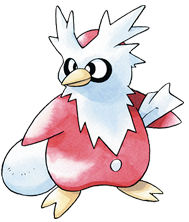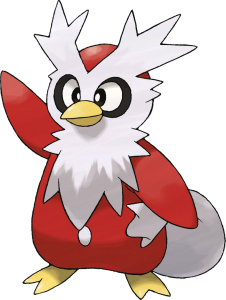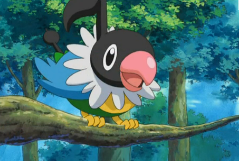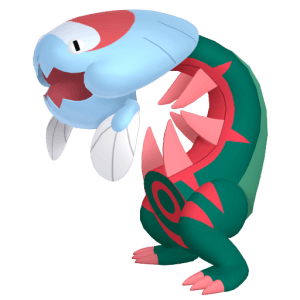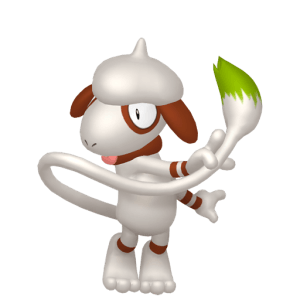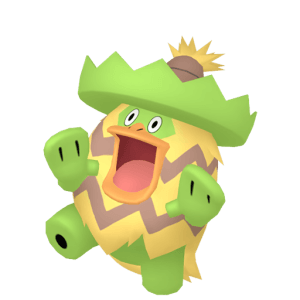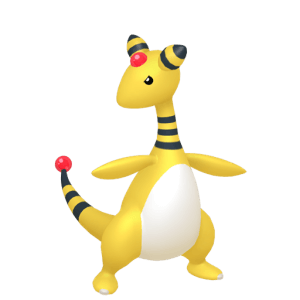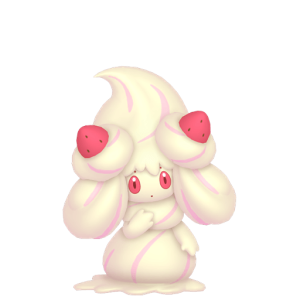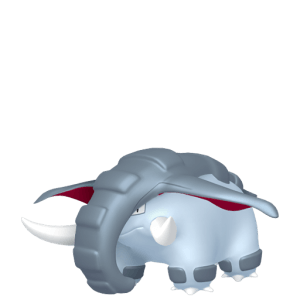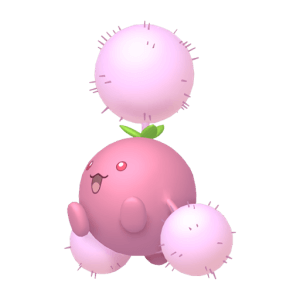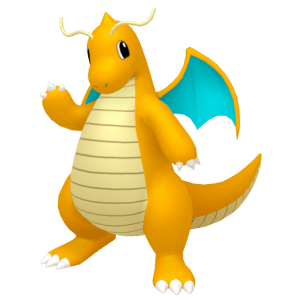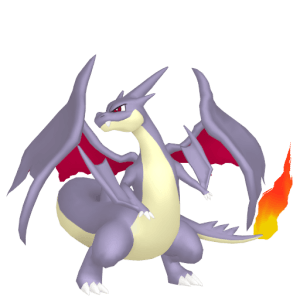Please read on for the 2nd episode of “The Jungle Games”! This week our tributes/participants/victims were asked to write a “Focus On” article about Gimmick Pokemon! Any long time reader of pokejungle knows that we’ve been doing these “Focus On” articles since the launch of Black and White and they were one of the first series of original content we created. They do vary depending on what ‘jungle staff is writing them, but generally they provide an overview of a Pokemon or game mechanic with some commentary. UPD: We fixed the poll! Here were the submissions:
[tabswrap] [tabhead id=”1″] Start [/tabhead] [tabhead id=”2″] #352 [/tabhead] [tabhead id=”3″] #327 [/tabhead] [tabhead id=”4″] #351 [/tabhead] [tabhead id=”5″] #225 [/tabhead] [tabhead id=”6″] #585/6 [/tabhead] [tabhead id=”7″] #311/2 [/tabhead] [tabhead id=”8″] #441 [/tabhead] [tabhead id=”9″] #235 [/tabhead] [tabhead_last id=”10″] #442 [/tabhead_last]
[tab id=”1″] Click on the tabs to see the entries 😀 As some commenters pointed out, if I put someone’s submission here it may make it unfair… [/tab]
[tab id=”2″] Pokemon #352 Kecleon – this Pokemon is classified as one of the Pokemon franchises ‘Gimmick’ Pokemon.
So what is a ‘Gimmick Pokemon’ ? – Gimmick Pokemon, also referred to as ‘novelty Pokemon’, are Pokemon which occupy specific characteristics which differentiate to that of the larger scale of Pokemon within the games. Whether it be an exclusive individual ability, a limited move pool, a unique feature, varied stats different from other characters, restricted evolution or introduced into the game to showcase a new in-game adaption. These Pokemon are often difficult to obtain within the games, and are mainly sought after for their surprise factor.
Kecleon’s design is comparable to the visual of the reptilian, the Chameleon. Possessing a green reptilian figure, it’s lizard inspired shape is centre pieced by a purple zig-zagged flash across its midsection, it’s beady black eyes are highlighted by a yellow ring around each which trail off to the front, connecting into a thicker line ascending down its elongated face, connecting to its outspread yellow lips. The yellow line also extends upward from the eye rings, widening and becoming zig-zagged, forming the top of its head either side. Sitting behind its stretched lips sits a pliable tongue which is long and thin. The base of its feet and palms are yellow, largely highlighting these features from its green body mass. Situated on its back are ridges which stretch up onto its shoulders into a spiked fashion – adding to the reptilian aesthetic of the character. Extruding from its lower back is a long, tightly coiled tail which is nearing equal in size to its body mass.
True to the nature of the chameleon, Kecleon is capable of transforming the colour of its body to match its surrounding, almost making it invisible – this adaption aids it’s hunting instinct and allows it to sneak up on prey within the wild. However, although its camouflaging adaption makes it almost undetectable, the purple zig-zagged pattern across its middle cannot be cloaked, and stays exposed. A fully grown Kecleon averages at a height of 3’03’. They reside mainly within the rain forests of Hoenn, and are rare to find due to their colour changing concealment.
The trait in which makes Kecleon a ‘gimmick Pokemon’ is that it has an individual natural ability. The ‘Color Swap’ Pokemon, is precisely that, and showcases the ability ‘COLOUR CHANGE’. This unique ability allows Kecleon to switch its type from ‘normal’ during battle to the type of the move in which previously attacked it.
This ability is very unique, and if worked strategically in affiliation with a carefully selected move set, its results can be very effective. It’s move pool is very wide ranged expressing moves of various typings, and has strong attack and special defence stats, however it has a very poor speed stat. Kecleon has no resistance against any other moves, and is damaged normally by all type moves when sat within normal type status. The only exception to this is its immunity to ghost attacks.
However this ability’s potential only has to be demonstrated once for your opponent to realise that there is a strong possibility that they can use your ability against you and use your type change as an advantage to them, this compromises its defense, and restricts its competitive appeal. For example, we know some types have a weakness to themselves such as dragon and ghost type moves, if Kecleon was hit by a dragon type move it’s type would switch from normal to dragon – this then leaves it wide open to weakness from that same dragon attack.
Interesting fact – although Kecleon is the only Pokemon with this unique ability which allows it to change it’s typing, It is unable to learn the move ‘Camouflage’ – a move in which allows the using Pokemon to change its type based upon its surroundings.
Interested in catching your very own Color changing reptile? – if so, you’d do well to locate your older Pokemon games as Kecleon is only obtainable in the wild in Ruby, Sapphire, Emerald, Diamond and Platinum. So boot up that Poketransfer!
So there you have it folks, Pokemon #352, Kecleon. [/tab]
[tab id=”3″]
Hello readers! This small sub-series of Focus On articles will be focusing on the many “Gimmick” Pokémon within the franchise. Gimmick Pokémon is a name generally given to a Pokémon that has certain traits, I won’t go into too much detail as most of you already understand what Gimmick Pokémon are – if not, there’s an abundance of information online! These articles will cover a variety of points on each Pokémon, so read on…
The first Pokémon in the series is Spinda. Introduced in Generation III, Spinda takes its name and inspiration from the panda of our world, and the word spin; Spin and Panda. Appearance wise Spinda draws from both a panda and a play on its trait of confusion. It is nearly always depicted as losing its balance or being dizzy/confused, as well as having a facial expression to boot, however this is part of Spinda’s intended behaviour, and the Pokémon is not actually confused – as described in the Pokédex entry in Generation IV/V: “No two Spinda have the same pattern of spots. Its tottering step fouls the aim of foes.”
What makes Spinda a gimmick Pokémon is mainly the fact each individual looks completely original; no two (in theory) can have the same spot placement. The positioning and number of the salmon-coloured spots is determined by the personality value of the individual Pokémon, with over four billion different combinations being possible. Another key factor in Spinda’s gimmick Pokémon classification, is that all six of the Pokémon’s base stats are 60, with a total of 360, this makes it notoriously bad/difficult to use in competitive battling.
Spinda’s best hope in the competitive battling scene is to boost its attack, defense and speed and land an attack wherever it can, doing as much damage as the little guy can. I’ll only list one set, as personally it’s the best chance you have at using Spinda successfully without making a completely fool of yourself, and this isn’t a purely competitive Focus On.
[spoiler]Item: Leftovers
Ability: Contrary (You’re going to need a Dream World Spinda)
Nature: Adamant
EVs: 80 HP / 252 Attack / 176 Speed.
[list style=”orb” color=”green”]
- Superpower
- Sucker Punch
- Return
- Hypnosis
[/list]
The general idea here is to use Contrary to your advantage, in combination with Superpower Spinda, will gain all the boosts it can in Attack/Defense. The boosts can give some borrowed time to set-up if necessary (which I generally wouldn’t recommend). Sucker Punch is there for when you need to hit first, whether before or after boosts. Hypnosis will buy you time for further boosts assuming you’re not switched out on. Return is included so that you can land a move if you’re put into a corner or your other options are unviable.[/spoiler]
As a whole Spinda is generally a gimmick Pokémon, it doesn’t have much competitive use, it’s hardly the most visually appealing Pokémon and is rather irritating. Regardless, what do you guys think of this Pokémon? Have you ever used it competitively, or do you plan to? How would you change it? Get commenting below, and see you all again soon! [/tab]
[tab id=”4″] Today’s Castform predicts a Rattata of rain in the morning followed by a short Bellossom in the afternoon; however it’ll soon turn Thundurus in the evening with a Vigoroth storm overnight. This pun filled Trubbish was brought to you by the Weather Institute.
As some of you may have fathomed from my wonderfully bad intro, today’s “Focus on” is about our unique friend. He has a stylish quiff and absurdly large family jewels. That’s right I can only mean one Pokémon, Castform!
[spoiler]
Basic Info:
This cloud inspired puff made its debut in the 3rd generation of Pokémon video games (R/S/E). Its name derives from the words “Forecast” and “Transform” (the latter I will talk about shortly). It is one of a few “artificial” Pokémon in existence. It was made solely for weather predictions by the Weather Institute in Hoenn, and to help with their ongoing research. Despite the fact it was manmade, Castform can be either a male or a female (I’ll refer to Castform as a “he” for the sake of ease). Also, weirdly enough it can breed which would surely create a religious outrage across the planet (if Pokémon had religions). But back on topic, here are some other quick facts:
Japanese Name: Powarun/Powalen.
Type: Normal.
Height: 1’00”/0.3m.
Weight: 1.8lbs/0.8kg.
Gender Ratio: 50/50.
National Dex Number: 351.
Ability: Forecast.
What makes it unique?
All Pokémon are unique, however Castform’s ability really stands out. You could say that he doesn’t just predict the weather, but he IS the weather. Yes I didn’t just make that up Pokémon really has become that crazy, and it’s no longer just creatures on steroids. The aptly named “Forecast” ability allows him to “transform” into a type based on the current weather. So if it’s sunny, he’ll turn into a fire type. If it’s raining, he’ll turn into a water type, and if it’s hailing, he’ll turn into an ice type. However he doesn’t change form/type for when Sandstorm, Shadow Sky, or Fog are in effect. Also all his weaknesses change if he becomes a different type so bare that in mind. Although he may seem a bit too similar to Ditto with the whole transformation gimmick, trust me when I say he is no clone. With this transformation he not only changes his typing and appearance to represent the current weather (changes design to sun/raindrop/storm cloud), but it also changes the effect of his signature attack…
Battle Uses:
This little stress ball may look harmless but don’t be fooled. The very reason (in fact it’s probably the only reason) you would want to use this Pokémon in battle is due to its diverse and equally devastating attack named “Weather Ball”. Now to begin with, this attack is nothing special. However if one of the weather effects are in play then the opponent on the receiving end is going to be in a world of pain. This move starts off as a normal type move with 100% accuracy, 10pp, and only 50 base power. However due to Castform being a normal type; he will also receive STAB (same-type attack bonus) so the damage is increased to 75. This isn’t very impressive, but if a weather condition is in effect then the move will change type to match the weather (just like Castform), but it will also double in power! So the base power would be 100 and with the possibility of STAB being added (as Castform will probably be the same type unless Sandstorm/Shadow Sky is in play), the power could rise to an eye watering 150! That’s not only stronger than a Fire Blast but the move also retains its 100% accuracy, and 10pp. This makes it all very exciting, unfortunately though that’s where the good stuff ends. The major problem is that Castform’s stats are quite poor overall. He doesn’t excel at anything, and even though both his attacks and both his defences aren’t bad, they’re still not great. Also he’s pretty slow. Here are his base stats:
HP: 70
Attack: 70
Defence: 70
Sp. Attack: 70
Sp. Defence: 70
Speed: 70
Another problem for Castform is that for Weather Ball to be truly effective there needs to be a weather effect in play. This usually requires a move such as Rain Dance or Sunny Day to be used first (unless you’re in one of a few areas where weather is active outside of battle). This means that it’s unlikely Castform will be able to defeat a Pokémon in 1 turn, and it will probably leave him vulnerable to at least one or two attacks. But if you’re lucky enough to survive or another Pokémon uses a weather effect, then Castform could become a worthy foe, and a force to be reckoned with. Especially if used well in conjunction with a useful item, and nature. The versatility in its move pool is one of its core strengths. Being able to change type enables it to use a big variety of attacks. You could max out its power by using moves such as Blizzard, and Thunder or you could be more strategic (basically annoy the opponent as much as possible), by using moves such as Thunder Wave or Toxic. Also don’t underestimate egg moves. In the right (or wrong) hands, this cute weather predicting blob could become quite menacing. But if I’m brutally honest, I don’t think he’s cut out for competitive play. I mean just look at him he’s too innocent looking, though having said that there’s something about him I don’t trust…
Major Roles:
Since its birth in 2002 (Japan), Castform hasn’t had many major appearances. In game you were given one as a gift for saving the Weather Institute from Team Magma/Aqua. In the anime it was the main focus for the episode “Unfair Weather Friends”, where Team Aqua tried to steal data about the legendary Pokémon Kyogre. Other than that, it has only appeared as a cameo in a couple of other episodes. On the manga side of things, main character “Ruby” of the Pokémon Adventures series was given a female Castform named “Popo”. She was previously owned by Mr. Stone who is the president of the Devon Corporation in Rustboro City in Hoenn, and father or Hoenn Champion Steven Stone. Unfortunately he was injured in an attack by Team Aqua so he gave her to reporters “Gabby” and “Ty” (also known as “Maryann” and “Tyler” in the Chuang Yi translation) to look after. From there she travelled around with them for a bit but soon became lonely, therefore after the battle between Ruby, and his Dad Norman at the Weather Institute, Gabby & Ty decided to give him Popo. Ruby went on to enter Popo in the “Smart” Pokémon Contests throughout Hoenn.
Interesting Facts:
[list style=”orb” color=”green”]
- Castform is the only Pokémon who can learn both “Ember” and “Water Gun”, as well as Ember and “Powder Snow”.
- He is also the only Pokémon who by levelling up can learn both “Fire Blast” and “Hydro Pump”, as well as Fire Blast and “Blizzard”.
- He’s the only Pokémon who has the dual egg group “Fairy” and “Amorphous”.
- He’s the only Pokémon to always get STAB on Weather Ball (unless Sandstorm or Shadow Sky is in effect or he loses his ability).
- His Ice form is the first “pure” ice type Pokémon in the National Dex.
- Castform is the lightest Normal type Pokémon.
[/list]
Thanks to Bulbapedia for these interesting facts.
[/spoiler]
So there you have it, as much as you could possibly want to know about this deformed marshmallow. What are your thoughts on him? Do you find him cute or crude? Would you let him shine in your team or let him become a tear of despair? Would you ever want to see new forms or an evolution? Leave your comments below.
P.S. Does this orange guy remind you of him? http://www.youtube.com/watch?v=EXa2F3kYeBI [/tab]
[tab id=”5″] Season’s greetings, friends! Well, not really, but boy does this Pokémon sure make it feel like ‘tis the season! Today’s Focus On article features the gimmicky holiday-themed Pokémon, Delibird!
Delibird, the Delivery Pokémon; it carries food rolled up in its tail. It has a habit of sharing food with people lost in mountains.
[spoiler]
How is it a gimmick?
While several Pokémon are gimmicks for their ability, or the moves they can learn, this Ice/Flying-Type is special for multiple reasons. First and foremost, Delibird’s appearance is based on Santa Claus, which is more apparent if you look at its sprites from Generation II, Pokémon Gold in particular:
Wow, who’d have thought that’s what Delibird used to look like? This Pokémon’s references to good ol’ Saint Nick don’t seem stop there either. Delibird’s National Dex number is #225; the 25th, as you know, is the date people celebrate Christmas! And seeing as Christmas is the season of giving, Present is appropriately the only move Delibird can learn leveling up. It’s as if Delibird represents Christmas or something!
How does it fight?
Fortunately, Delibird isn’t limited to using Present, as it has a handful of Egg Moves, and can learn a plethora of TMs. But despite this decent movepool, this Pokémon has mediocre base stats:
HP: 45
Attack: 55
Defense: 45
Special Attack: 65
Special Defense: 45
Speed: 75
Delibird is ranked at “NU”, or “Never Used”. Since it’s other abilities only prevent it from sleeping, Hustle is Delibird’s only useful ability as far as the competitive gaming community is concerned.
Hustle (Boosts the Attack stat, but lowers accuracy).
Let’s see what I can some up with, here:
- Ability: Hustle
- Nature: Adamant/Jolly
- Item: Choice Band/Focus Sash
- EVs: 252 Attack – 252 Speed – 4 SpD
- Ice Shard
- Ariel Ace
- Ice Punch
- Pluck/Brick Break
This is this best shot a Delibird’s got. The hold item is a tossup; the Choice Band is for a stronger boost in a physical STAB move, while the Focus Sash helps it last longer in battle. The moveset takes advantage of its dual typing with a set of STAB moves including the increased priority move, Ice Shard, and Pluck which is interchangeable for Brick Break.
Now, while I find competitive battling incredibly enticing, I tend to just capture the Pokémon I think look cool, so you can bet I always get a Delibird to join my team!
How does it look?
This Pokémon is based on Santa, yes, but its design also derives from birds such as penguins, as you can tell by its general body shape. Delibird’s main body is a beautiful shade of red, and it’s got a light yellow beak and pair of feet. This Pokémon’s white feathers cover most of its face and chest, where a single white button sits below. Its tail of the same white resembles a sack, and Delibird hold onto their tail like it’s filled with presents. Reaching inside of it yields their Present attack, after all. This design is so simple, yet is teeming with the holiday spirit, which I can’t get enough of! I really enjoy the look of this bird Pokémon.[/spoiler]
‘Twas the night before Christmas, and throughout the region I beseech you, not a Pokémon was stirring, not even a Pichu. And all around Johto, I could have sworn I’d heard, Santa’s faithful Pokémon, his very own Delibird!
That’s all for this week’s Focus On everyone. Thanks for reading and I’ll catch ya later!
[/tab]
[tab id=”6″]
With every generation new elements are continually added and expanded upon in order to make the games more realistic. With G/S the time of day became a factor in graphical aspects, evolutions and even trainer availability; In R/S weather effects were advanced upon and became apparent in the overworld; In D/P, gender differences became visible in a fifth of all Pokemon; and with B/W anticipated seasonal aspects were finally introduced in a monthly cycle. Effected factors in season changes include; visual alterations, varied Pokemon encounter rates, and modified background music. With the implementation of seasons, fans also received Deerling and its evolution Sawsbuck, who are consequently the first Pokemon to exercise form changes that reflect the (in-game) seasons, as shown below.
Overview
Unfortunately, unlike other form-changing Pokemon, Deerling and Sawsbuck’s season based changes are purely aesthetic. Despite this, the evolution line is still a fantastic addition to any B/W in-game party. Deerling is a Grass/Normal-type that can be first-obtained prior to fighting the fifth gym. While it can prove useful in combatting the Ground gym leader, the remaining 3 gyms of the region can easily cause the season Pokemon trouble in terms of type matchup. Deerling evolves at level 33 into Sawsbuck and retains its Grass/Normal-typing. The deer evolution doesn’t distinguish itself by exceeding in any particular stat, and upon first appearances it doesn’t outclass any of its Grass-typed regional competition that will undoubtedly be fighting for a slot in your party (Simisage, Whimsicott, Leavanny, etc). However, thanks to some fantastic abilities (Chlorophyll and Sap Sipper) and a movepool that provides efficient type coverage it’s still easy to establish Sawsbuck as one of the best physical Grass-type attackers of generation 5.
Design
The creativity seen in Deerling is minimal, Game Freak has decided to give Pokemon fans a deer (fawn) Pokemon and that’s exactly what they’ve delivered. Honestly, Deerling’s design doesn’t exactly resemble anything that Disney haven’t already established with Bambi. Even Deerling’s from changes only reflect the seasons through simple colour scheme alterations. Unquestionably, Deerling provides me with an appeal in its cute demeanour, but ultimately I’m disappointed in the lack of distinguishable features in the from changes; I would have been significantly happier if only the flower on Deerling’s head went through some sort of season-orientated modifications as well.
As for Sawsbuck, the Pokemon practically emanates elegance through its regal stance. As expected from an evolution, a maturity of growth is exhibited in the development of antlers, thickened fur and appearance of traditional Grass-typed elements (varied by froms). In terms of the forms, the seasonal changes are much more visually prominent when compared to its pre-evolution. In accordance to the gimmick, the antlers clearly depict the growth of trees and the progression they see in terms of the season-cycle. Apart from the antlers, the coloured spots on the back of each form clearly continue the season representation; in particular, the winter incarnation of Sawsbuck features the practical addition of white fur to further emphasise the season based gimmick. When the entire gimmick of Deerling/Sawsbuck is based around aesthetics, it’s nice to see Game Freak pay so much attention to the designs of Sawsbuck, I only wish that Deerling could have exhibited more notable form changes as well.
Competitive Value
Sawsbuck has quite a few factors supporting it in the way of competitive battling. Even though, Sawsbuck’s stats are initially underwhelming, it’s physical Attack and Speed stats are still easily abusable through Swords Dance and Chlorophyll respectively. While Sap Sipper can be seen as situational, Sawsbuck’s Chlorophyll on the other hand can be successfully utilised within a team that supports Sun (in an OU environment Ninetales is essential).
Providing Sawsbuck has maximum EV investment in Attack, after a single boost from Swords Dance Sawsbuck can reach a mighty 656 Attack with an Adamant nature (598 if Jolly); with suitable type coverage in Sawsbuck’s remaining moveslots it can easily smash through an opponents team. Horn Leech is a move exclusive to Sawsbuck and it presents not only a physical, STAB boosted Grass-type move for Sawsbuck, but also additional healing to try and compensate for Sawsbuck’s poor defences. While Double-Edge could be considered a bad choice due to recoil hindering Sawsbuck’s already unsatisfactory survivability, by further utilising Horn Leech, any recoil can easily be mitigated and allow for Sawsbuck to continue initialising itself as a prime physical threat. In Sawbuck’s final move slot, there are a two main options that allow for increased type coverage; in Wi-Fi and simulated battles Nature Power will always emulate Earthquake, allowing Sawsbuck to hit Steel-type Pokemon for super-effective damage; Jump Kick is also an option for the same reason, however the accuracy is lower and the side-effect of missing the move can be considered unattractive.
Competitively, Sawsbuck finds itself sharing battling traits that make it similar to Leafeon. With equal Speed and more attack Leafeon also primarily finds itself as a Swords Dance + Chlorophyll abuser. However, with Leafeon’s weak coverage Sawsbuck has the opportunity to shine through with not only an additional STAB move, but also the opportunity to heal and access to moves that beat Steel-types. [/tab]
[tab id=”7″]
Known to many as the “Pikachu Copies” of the Hoenn region, today I bring the focus onto the gimmick that is Plusle and Minun. Both are classified as the Cheering Pokémon, appropriately named for their ability to cheer the other on in battle. Plusle and Minun are based off of rabbits, and both are the electric type. The two are identical in height, weight, and basic body structure – only having minor differences from the other in looks. Other than their cute, playful looks, the two have never appealed to much. I’ve never felt inclined to choose one for an in-game team. “Pickachu Copies,” is, no-doubt, a fitting name for the cute pair, due to their undeniable resemblence to Pikachu – not to mention, they are both electric typed rodents.
Without further ado, let us delve into the lives of these two Pokémon:
[spoiler] Plusle is the red, electric rabbit, with large red ears. (Despite the difference in color, Plusle can also be distinguished by it’s bent right ear.) Based off of a positive electric charge, Plusle has red pouches on his cheeks with a plus-sign in the middle, and a pluse-sign shaped tail. I couldn’t tell you why, but I’ve always liked Minun more than Plusle. It’s probably because of Minun’s bright blue color; I’ve never been a fan of the color red. Being the opposite, counterpart to Plusle, Minun is based of a negative electric charge. Minun has blue patches on it’s cheeks, with minus-symbols in the middle, and a blue, minus symbol shaped tail.
When it comes to thinking of Pluse and Minun, it’s near impossible to think of one without the other. These cute electric rabbits were created to showcase double battles, which was introduced in the Hoenn region. Plusle and Minun are the only two Pokémon (before Gen. V) to have the abilities, Plus and Minus. Plus and Minus are abilities that power up the Pokémon’s Special Attack by 1.5x when paired with its counterpart ability. Due to this, the two aren’t very good at battling on their own. Plusle and Minun work best when together, specializing in moves such as Helping Hand – powering up its partner’s moves. [/spoiler]
Being known for only working well together in a 2-on-2 battle, Plusle and Minun have earned the status of a gimmick Pokémon. Any Pokémon fan can tell, that the two were created to showcase the introduction of double battles in gen III. Other than being cute to look at, these electric-rabbits aren’t that great to use on a team. But use these two as partners in a double battle, and sparks will really fly.
Bye for now Pokéjunglers! Be sure to keep checking back on Pokéjungle for the latest Pokémon news, and the continuation of our focus on gimmick Pokémon. [/tab]
[tab id=”8″] It’s time for a new Focus On article, this time based on gimmick Pokémon. As you’ve probably guessed(Or maybe you read the title!), this edition is going to be about Chatot, everyone’s favorite parrot Pokémon. That might just be because it’s the only one, but hey. Anyway, onto the real article, before I get interrupted by–
Squawk! Click through to see the full article!
[spoiler]
The Pokémon series has quite a lot of ‘gimmick’ Pokémon, that is, Pokémon that are made to have unique features, that are typically unhelpful in battle, but introduce features to the player. The first generation had many, most of them were to make in-game trading a feature more people used, or genuinely useful, like Ditto, or even Eevee. So what exactly is the criteria?
Most gimmick Pokémon have little or no use in battle, as they tend to have lower battle stats than the typical pokémon, yet they have certain abilities, forms, or methods of acquiring that makes them stand out of the crowd. They tend to expand the pokémon universe outside of battling, such as Unown, which give the player a side-quest, and are more geared towards the players who are into the novelty of the Pokémon world, rather than the competitive side. For me, Castform was always the original gimmick, as it was my first gimmick Pokémon! I remember how much I loved the novelty of the weather changes.
But anyway, to get onto the star of today’s article, Chatot!
Chatot is a pretty straightforward gimmick Pokémon, designed to give players a foray into the new microphone capabilities in D/P. Most notably, the move Chatter, learned only by Chatot. The move itself is only mildly useful, but it wasn’t made to used competitively. Chatter allows you to record your voice, and then when the move is used, play that voice back during the attack. It also replaces the call for Chatot, making it the voice you recorded. However, the voice is quite heavily distorted. Probably because of the fear that people would use it to say immature things, because, come on, you must’ve been thinking about it!
It’s design is also pretty straightforward, a parrot, and it’s ability makes it quite obvious as well. But let’s get much more in depth than that.
From the zoological side, it’s quite clearly an Agapornis Personatus(I can already tell what you saw in that name, geez!), commonly known as the Masked lovebird, a small species of parrot, with a black head, red beak, yellow neck, and green body, as well as the small size of Chatot. However, it lacks the signature blue that really makes Chatot. This part probably comes from a Blue-Gold Macaw, a species of Macaw with a very vivid blue, yellow, and sometimes green.
But how about the abstract part of this bird? The head is an upright Eighth note, with a white collar from an orchestra conductor. The tail is quite clearly a metronome. All three of these clearly show the musical nature of the bird, and are a play on a Parrot’s ability to produce unique bird songs, as well as mimic human voice. Strangely enough, even if it has a metronome for a tail, in every game it is found in the wild, it can be found holding a metronome.
So, how about the competitive side of things? Sadly, this little friend has few uses in a true competitive battle, as it has rather low base stats-
[list style=”orb” color=”green”]
- Health: 76
- Defense: 45
- Attack: 65
- Speed: 91
- Special Attack: 92
- Special Defense: 42
- Total: 411
[/list]
So as you can see, it doesn’t have quite the strength to be used in battle. Although, if you used proper EV training, you might have something to use competitively. It also has a very low base power in the attacks it learns in level up, with the best move it learns being Hyper Voice, which has 90 base power. But how about the battle stats of it’s signature move, Chatter? Chatter is a special-category flying type move, and has a quite unique ability of being able to record a saying, and have it play every time it is used in battle. However, this attack only has 60 base damage, and is rather weak. But the real kicker is the ability to confuse the enemy, and the chance of it doing this is based on how loud the recording you did was. Although this can have a max of 30%, it is quite the unique addition to a competitive game.
If you plan on using it competitively, my tip to you is to have Nasty Plot and Hyper Voice, as it can make Chatot a pretty hard hitter. If you really want some type coverage, Chatot can learn Heat Wave via the Battle Frontier move tutors in HG/SS, and this is a pretty great start. For a held item, I’d recommend a special-attack boosting one, such as a life orb, choice specs, or whatever else that might come to mind. Now if you really want to get into the competitive side of things, use a Timid nature Chatot, and focus on Special attack and Speed EVs. Since it has a type of Flying/Normal, it’s best to look out for rock, ice, and electric types, however, it learns very few moves to counter them, yet heat wave can allow it to counter ice types.
[/spoiler]
So do y’all think of Chatot? Feel free to discuss! [/tab]
[tab id=”9″] Hey guys it’s _____ again with a focus article based around one of the more complex Pokemon found in the Johto Region as well as the Hoenn Battle Frontiers Artisan Cave, Smeargle! Let’s begin shall we!?
Smeargle, The Painter Pokemon, It marks its territory by using its tail like a paintbrush. There are more than 5,000 different marks.
Smeargle’s an interesting Pokemon in almost any sense, Design or in Battle. It’s a beagle/Picasso mix. Smeargle is a bipedal dog humanoid wearing a french beret, has brown markings scattered around its body, and has a long tail tipped with a special fluid similar to green paint. Based on the design, Smeargle doesn’t really seem to stand out against the other wildly designed Pokemon after the 2nd generation.
As for competitive battling, Smeargle is a VERY interesting case and sad to say but not in a good way. Although he can learn any move in the Pokemon universe via Sketch, when it comes to Smeargle’s stats, it almost seems useless.
- HP: 55
- Atk: 20
- Def: 35
- Sp. Atk: 20
- Sp. Def: 45
- Spd: 75
In the competitive field, even an Adamant (+Atk -Sp.Atk.) or Timid (+Spd. -Atk.) Smeargle stands little chance of survival against almost anything unless a Focus Sash is equipped and with the infinite movepool thanks to Sketch, Smeargle can actually stand his ground if all is played correctly. Also included in a good set up for the little painter would be to have one with the Moody ability. Moody raises a random stat by 2 stages and lowers another stat by 1 stage at the end of your turn. If the odds are ever in Smeargle’s favor, you could have yourself a beast of a beagle! But be warned that the only way of obtaining a Moody Smeargle is through the Dream World within the Spooky Manor. Other abilities include:
Own Tempo- Prevents Smeargle from being Confused. Good for a few online battles considering few battles involve Confusing the opponent unless Hurricane or other Phycial moves with secondary effects are used.
Technician- Attacks with a base power of 60 or less are boosted 1.5x. Good if you use a set with weaker moves with secondary effects, but because of low stats, often considered useless.
Moody- Raises a random stat by 2 stages and lowers another stat by 1 stage at the end of your turn. Best choice for a competitive Smeargle.
Well there you have it guys! I can’t say too much more about the little artist except how darn cute it is! It really is a shame though because of lackluster stats, your chances of seeing a Smeargle in the competitive field are slim to none. But I will say if Pokemon were real, Smeargle would be sight to see painting on canvas! ;D
Until next time everyone, stick around here and tell us what YOU think! Would you guys ever use a Smeargle on your team if he had a boss Sketch movepool? What do you think of Smeargle’s design? Any other Pokemon you think you would use? Leave us a comment below and also discuss with other members your strategies for either the mentioned Smeargle or any of your favorite Pokemon! We would love to here you guy’s ideas! [/tab]
[tab id=”10″] Sadly this tribute, Shane, has to pull out for personal health reasons. We wish him a quick recovery! He’s not disqualified for being considered for staff, but once he’s back in tip-top shape we’ll worry about it. Get better!!
- Spiritomb is number 108 in the Sinnoh Pokédex.
- It weighs 108.0 kilograms exactly.
- Its base values for Defense and Special Defense are each 108.
- Its Pokédex entry claims it was created from the fusion of 108 mischievous spirits now bound to the Odd Keystone.
[/tab] [/tabswrap]
Make sure to vote for the most well written piece, not the article that covered a Pokemon you love :p
[poll id=”48″]
<3 pokejungle
ps- This is the last competition like this you’ll see on the site *_* Each of these posts takes an hour to compile and format! Gonna be tired for Japanese class tomorrow. Since summer semester is squished into 8 weeks the class is already 3 hours long… hope I can stay awake :p
pps- The staff does read and take into consideration the long comments about each article! Don’t think that the poll is the only thing we evaluate when scoring reader reactions! In fact there were some really superb write ups last time and I’d love to read through some more!




